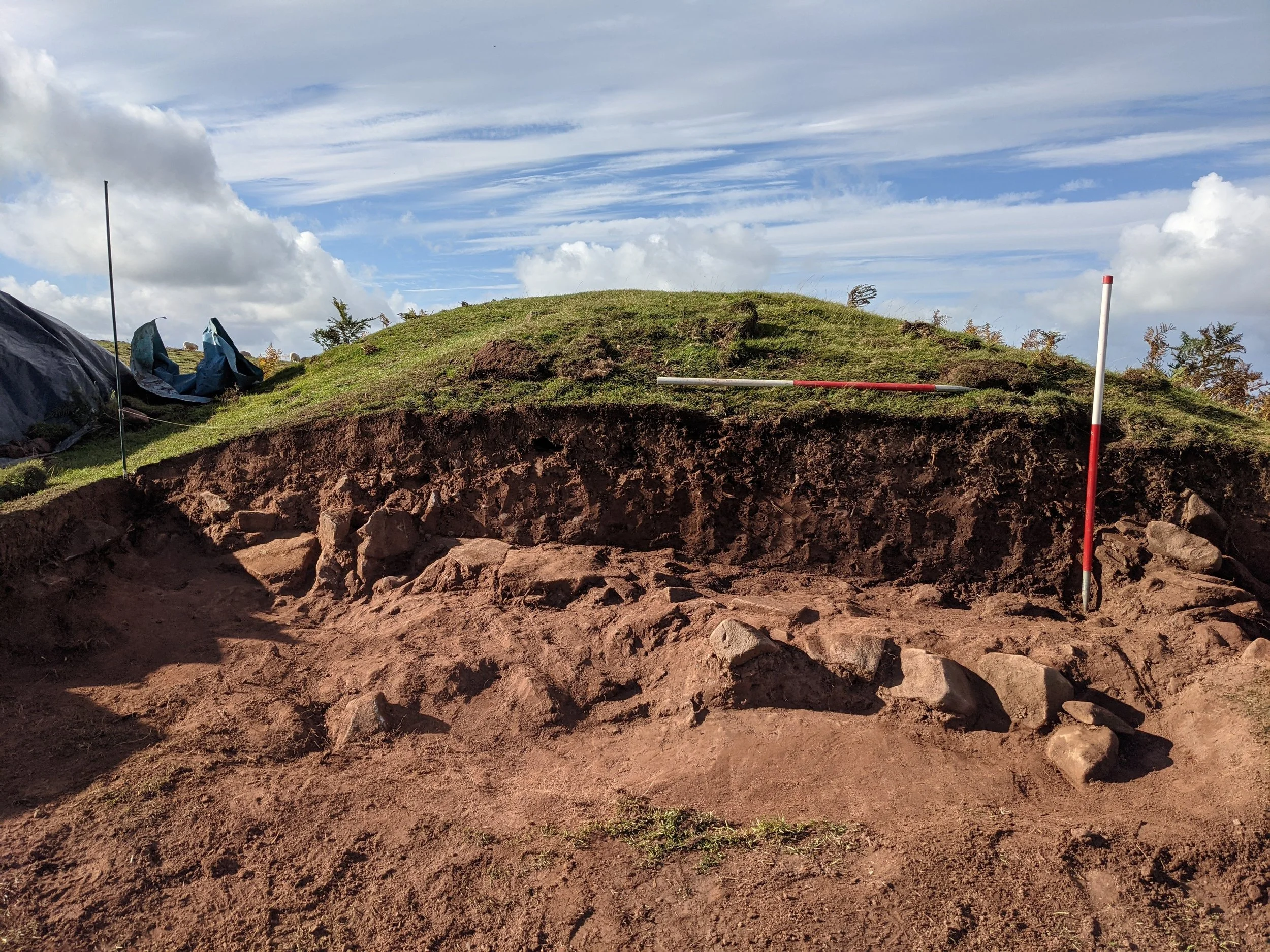
Where are we working?
This is a national project that is sharing learning from four areas: Lake District, Yorkshire Dales, Dartmoor and here in the Shropshire Hills.
The Shropshire Hills commons that are part of our project are:
• Clee Liberty (grid ref SO 5838 8454)
• Longmynd (grid ref SO 4310 9405)
• Stiperstones (grid ref SJ 3719 0028)
What are we working on?
We’re working with commoners and lots of other people to produce ‘commons visions’ – it’s our way of mapping out and delivering good things for the public, heritage and nature across the Shropshire Hills. This includes:
• Using camera monitoring and heat sensors to understand why whinchat nests succeed or fail.
• A Community Archeology project including investigating and repairing Nordy Bank hill fort.
• Working to improve sheep health on the commons.
• Working with commoners and the National Trust to co-create site messaging at Longmynd.
• Investigating the relationship between bracken management and butterfly numbers.
How to enjoy the Shropshire Hill’s commons
Upland commons are free for everyone to access and enjoy. Some of the best places to experience commons and their iconic views are on the hills and moors of the Shropshire Hills.
We’re sharing just a few ideas on how you can enjoy your day and notice why these special places are so important in responding to some the challenges we face in the 21st century.
-
There’s over a million hectares – that’s over 247 million football pitches – of common land in England.
These spaces are found in National Parks and Areas of Outstanding National Beauty across the country.
Upland commons are free for everyone to access and enjoy and some of the best places to experience them and their iconic views are on the hills and moors of Devon, the Shropshire Hills, the Lake District and the Yorkshire Dales.
Upland commons aren’t just picture perfect either. They bring a whole range of other benefits. Some of these are easy to spot and some of which can take you a little more time to notice.
There are tens of millions of day trips to common land each year and visitors make a significant contribution to the rural economy through tourism.
Planning a trip to Devon, the Shropshire Hills, the Lake District or the Yorkshire Dales? Here are just a few ideas on how you can enjoy your day and notice why these special places are so important to some of the challenges we face in the 21st century.
-
Step out on foot onto upland commons and you’ll experience beautiful landscapes. You’ll be rewarded with some of the most iconic views in the country. Try a day in the mountains on Catbells in the Lake District or Brant Fell in the Howgills.
-
Look out for sources of water. Paddling in a river, stream or waterfall isn’t just good fun. This could be your future drinking water – 10% of Britain’s water supply comes from upland commons.
-
There are 3,000 scheduled ancient monuments protected on British commons. They include stone circles, standing stones and roman camps. Spend your day in the outdoors, learning about history.
-
Commons support a greater diversity of wildlife than any other type of farmland. Try bird spotting – you’ll find the Dartford warbler in the south of the UK and the curlew in the Lakes and the Dales.
-
You’ll sometimes need more of a trained eye to spot these, but commons are filled with healthy peat bogs. These are areas of soil that are wet and they are covered in plants that rot down to form new peat. They trap millions of tonnes of carbon. They help us tackle climate change.
-
Many of the UK’s heritage breeds are closely associated with common land. You’ll get up close to different breeds of sheep, ponies and cattle.Each flock on the commons has an area of land where they stay without fencing, this is known as a ‘heaf’, ‘heft’ or ‘lear’. This way of shared land management is called commoning and has protected some of the UK’s most spectacular landscapes for a thousand years.

Commons in the Shropshire Hills
The 4720.5 hectares of common land in the Shropshire Hills include areas such as Longmynd, Stiperstones and Clee Liberty commons.
These are all very different landscapes, but they each showcase a special quality of the area which is a mixture of heathland, grassland, woodland and rivers.
The Shropshire Hills have an unusual mix of both upland and lowland wildlife, such as red grouse and dormouse.
What’s happening on the Shropshire Hills commons?
LiDAR data: Longmynd and Clee Liberty
LiDAR or Light Detection and Ranging technology can be used to visualise, interpret, and map the historic environment. Using an airborne laser scanner, it builds an accurate 3D digital elevation model of the earth’s surface and can show up features not visible from conventional aerial photography.
As part of the OUC project high-definition images were collected in February 2022 for the Longmynd and Clee Liberty commons.
This presentation from the LiDAR training session held in May 2022 gives more details and many examples of how LiDAR can be used and the kind of features it can make visible.
Why not have a go yourself with the maps for Longmynd and Clee Liberty that are now also available?
Commons Stories
Explore written and photographic portraits of people, short videos, audio clips, and reflections on events through the year and on some of the challenges of building sustainable futures for people and landscape in these special places.
Shropshire Hills Project Officer
As we near the end of the project, the project officer role is split between different partner organisations. Please direct your enquiry to Roseanna Davey who will put you in touch with the person best able to assist.
Get in touch with Roseanna:








